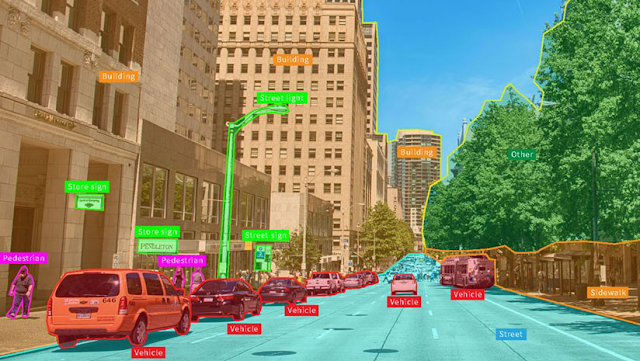How to Manage a Data Labelling and Annotation Project: A Comprehensive Guide
 |
How to Manage a Data Labelling and Annotation Project: A Comprehensive Guide |
Introduction
In our data-centric world, the insatiable appetite for top-tier labelled and annotated data continues to soar. Whether you're sculpting machine learning marvels, training AI titans, or voyaging through the realms of research, the veracity and dependability of your data labels and annotations reign supreme. Steering a data labelling and annotation project can resemble navigating a labyrinth, but with the right approach, tools, and tactics, you can distil the process and guarantee the triumph of your endeavour. In this illuminating exposé, we present an all-encompassing handbook to help you efficiently helm a data labelling and annotation project.
Crafting Crystal-Clear Objectives
 |
Crafting Crystal-Clear Objectives |
What enigma do you aspire to unravel with this eloquently labelled data?
What are the precise prerequisites for your data?
What destiny awaits your project?
Concrete objectives shall serve as your North Star, guiding your project and endowing you with the wisdom to make informed choices throughout the journey.
Aggregating and Refining Your Data Treasures
 |
Aggregating and Refining Your Data Treasures |
In the process of data aggregation, it's worth noting that data sources can come in various formats. These formats might include structured data, text, images, audio, or even video. Each data type requires unique handling and annotation techniques. For instance, while text data can be effectively labelled using natural language processing tools, image data necessitates bounding boxes or segmentation masks. Understanding these nuances is crucial for a successful annotation project.
Picking the Perfect Annotation Arsenal
 |
Picking the Perfect Annotation Arsenal |
In recent times, the landscape of annotation tools has witnessed remarkable evolution. AI-powered annotation platforms are emerging, enabling semi-automated annotation through machine learning algorithms. These tools can significantly expedite the annotation process while maintaining high accuracy. The integration of such advanced tools into your workflow can be a game-changer for efficiency.
Forging Meticulous Annotation Guidelines
 |
Forging Meticulous Annotation Guidelines |
However, as your annotation project expands, consider adopting a more flexible approach. Allow your annotators to contribute to the evolution of guidelines. Their insights and experiences can uncover new nuances in the data that enhance the quality of annotations. Encourage regular meetings and discussions to refine the guidelines collaboratively.
Assembling an Adept Brigade
Securing the services of a proficient cohort of annotators is imperative. Seek out individuals adorned with domain expertise should your project necessitate specialized knowledge. Regular training sessions and persistent feedback loops are indispensable to safeguard the sanctity of annotations.
The role of annotators extends beyond mere data labelling. They are the custodians of context. Encourage them to document any uncertainties or ambiguities they encounter during the annotation process. This feedback can be invaluable in refining guidelines and improving data quality.
Inaugurating a Pilot Test
Before orchestrating a grand-scale symphony, inaugurate a pilot test to gauge the efficacy of your annotation guidelines and the prowess of your annotators. Dedicate a modest slice of your dataset to unearth and rectify any anomalies or obscurities within the guidelines.
The pilot test should also serve as an opportunity to fine-tune your annotation process. Assess the time required for different annotation tasks and make adjustments to your project timeline accordingly. Finding some kind of harmony between speed and accuracy is fundamental.
Enforcing Vigorous Quality Control
 |
Enforcing Vigorous Quality Control; |
Efficiently Orchestrating Scalability
 |
Efficiently Orchestrating Scalability |
Scaling up requires careful planning. Consider the allocation of resources, the parallelization of tasks, and the optimization of workflows. Additionally, explore options for distributed annotation to expedite the process further.
Shepherding the Project Actively
Employ project management tools and strategies to actively supervise the progress of your annotation expedition. Keep a vigilant eye on tasks, deadlines, and the virtuosity of annotators. Be ready to recalibrate your tactics as the need arises.
Project management isn't just about tracking progress; it's also about fostering a collaborative and motivated team. Celebrate milestones, recognize the efforts of your annotators, and create an environment that encourages open communication and innovation.
Scrutiny and Unceasing Iteration
 |
Scrutiny and Unceasing Iteration |
In Conclusion
To preside over a data labelling and annotation project with aplomb demands sagacious foresight, the judicious selection of tools, and an unwavering commitment to upholding the sanctity of data. By adhering to these precepts and remaining steadfast in your pursuit of project objectives, you shall successfully navigate the convoluted realm of data annotation, contributing to the ascension of stalwart machine learning models and AI systems. Remember, the voyage of data annotation is perpetual, and relentless betterment is the lodestar to enduring success in the realm of data-driven pursuits.




0 Comments